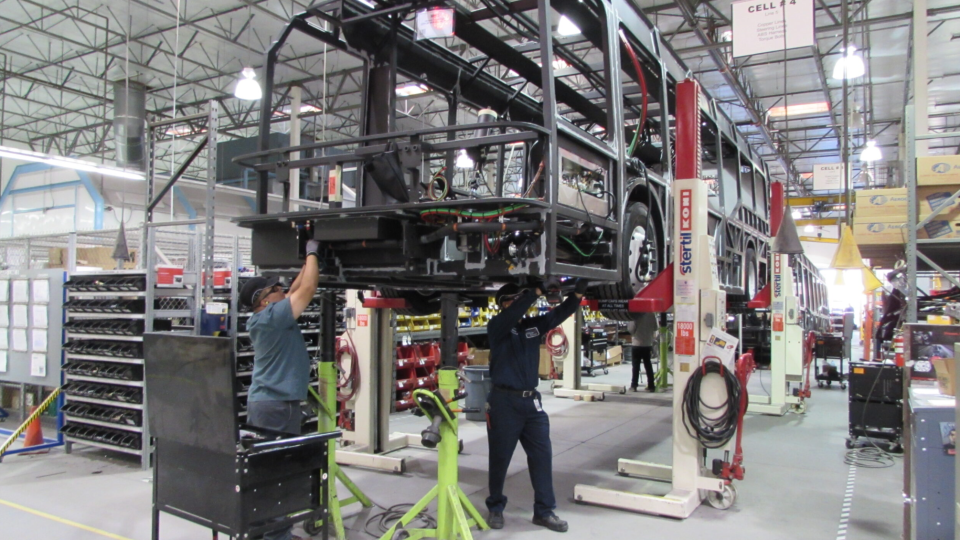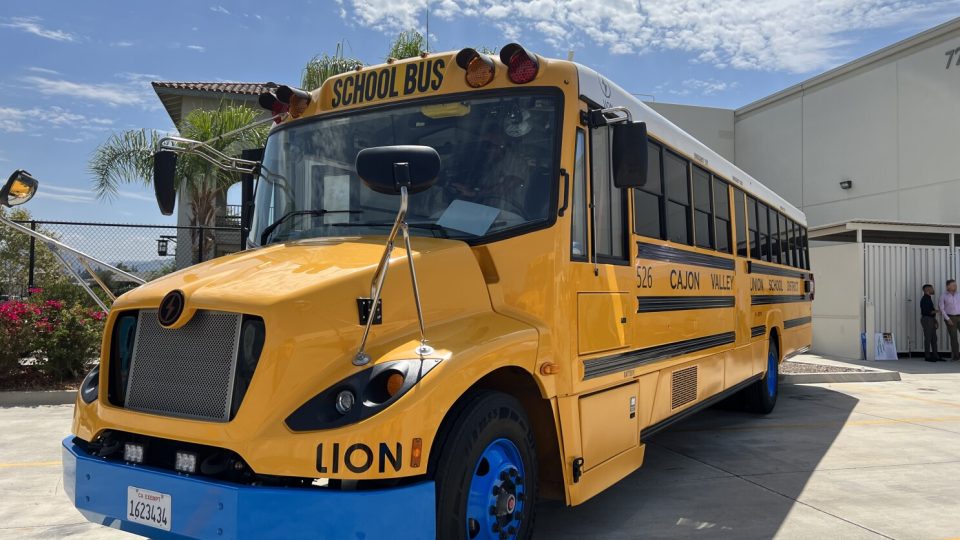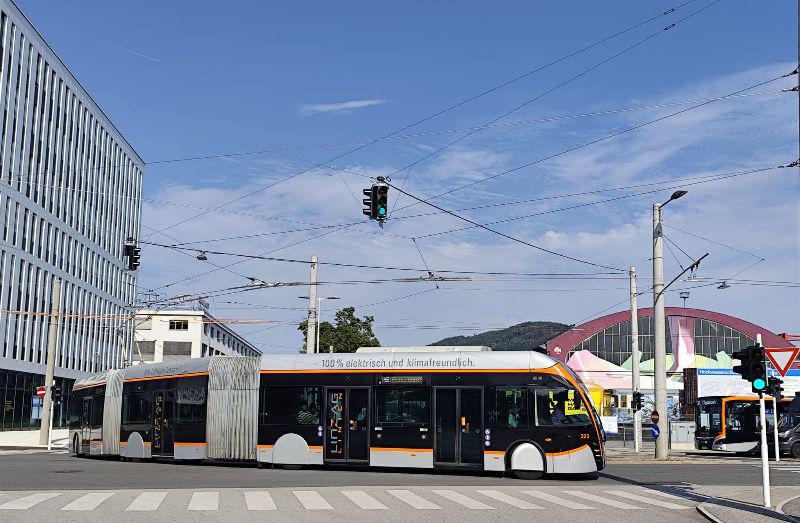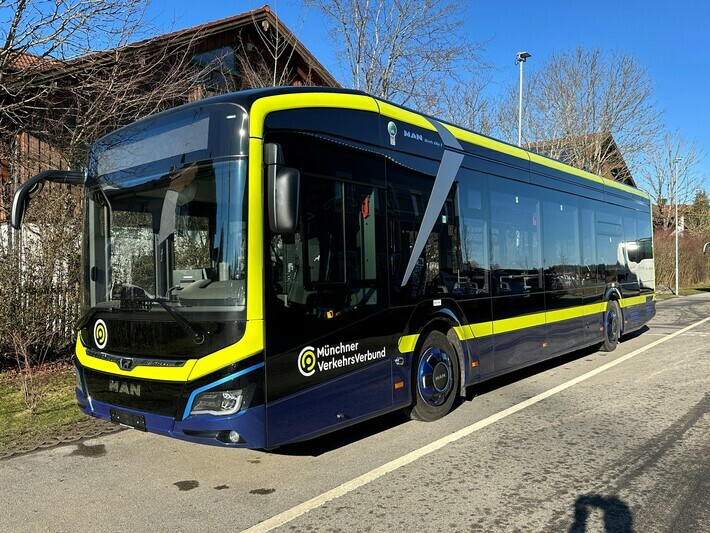Three fuel cell DD buses launched in Dublin
In Ireland, the National Transport Authority (NTA) in conjunction with Bus Éireann has recently unveiled three new hydrogen double-deck buses that will initially be used on commuter services in the Greater Dublin Area. The three fuel cell buses were recently purchased by the NTA and are servicing on Bus Éireann’s route 105X, which runs between […]
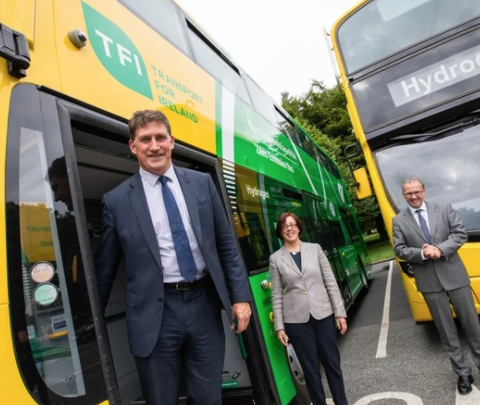
In Ireland, the National Transport Authority (NTA) in conjunction with Bus Éireann has recently unveiled three new hydrogen double-deck buses that will initially be used on commuter services in the Greater Dublin Area.
The three fuel cell buses were recently purchased by the NTA and are servicing on Bus Éireann’s route 105X, which runs between Dublin and Ratoath, County Meath.
Alongside these buses, we are also about to order 45 battery single-deck battery-electric buses for use in urban areas, with another 150 or so to come. And in the next month or so, we will be ordering the first 120 battery electric double-deck buses for use in the large cities, with another 680 to follow in the coming years
Anne Graham, NTA Chief Executive Officer
Bus Éireann, Wrightbus Streetdeck H2 FCEV in Dublin
The buses will be subject to in-service evaluation as part of an alternative fuels technology pilot being undertaken by the NTA in collaboration with Bus Éireann.
The buses being unveiled represent an investment by the state, of approximately €2.4m. The bus model in question – the Wrightbus Streetdeck H2 FCEV unveiled in late 2018 – is manufactured by Bamford Bus Company, and assembled at their factory in Galgorm, on the outskirts of Ballymena in Northern Ireland. The same company has recently unveiled its battery-electric double decker.
Each bus can accommodate up to 79 passengers within its overall length of 11.5 metres.
Hydrogen for the buses will initially be supplied by BOC Gases Ireland, with refueling being effected at its Bluebell facility on the Naas Road in Dublin. Maintenance of the buses will initially be undertaken by Municipal and Utilities Truck Equipment Company (MUTEC), on behalf of Bamford Bus Company, at their facility on the Longmile Road in Dublin.
Accessibility is a priority in the design of the new buses, which feature, NTA says, «priority seats upholstered in distinctive, high contrast moquette, a large permanent wheelchair space, wider access passages, a powered wheelchair ramp at the front doorway, an additional passenger information display within the wheelchair space, high definition exterior destination displays».
NTA, further 120 electric double decker buses coming
Minister for Transport Eamon Ryan TD said: “Reducing carbon emissions from transport is critical to reaching our climate goals and will also improve air quality for all. Other technologies such as battery-electric, are very well suited to bus services in urban areas, but on longer commuter and inter-urban routes, hydrogen fuel cell technology is an innovative zero pipe emission alternative to diesel. I’m especially pleased that the Wrightbus Streetdeck, which is the first such bus in the world, is assembled in Northern Ireland and that Bus Eireann are piloting these buses on their commuter route between Dublin to Ratoath.”
Given the very varied routes, locations and terrains Bus Éireann serves across 82 million kilometres a year, it has become evident that no single technology is the answer. While the focus is often on the vehicle, the deployment of each new technology requires huge back-of-house changes for our skilled engineers and craftworkers, at our 17 depots and in our supply chain.
Stephen Kent, Chief Executive Officer, Bus Éireann
Anne Graham, NTA Chief Executive Officer said: “As these new hydrogen buses go into operation with Bus Éireann, we are setting out on a journey towards a zero emission public transport fleet. Procuring these three buses and putting them into service gives us an opportunity to pilot hydrogen-fuel-cell technology in daily public transport operations in Ireland and to assess the part it can play in the long term transition to a zero emission bus fleet. Thanks to Luas and DART, already almost a quarter of all public transport journeys on the Transport For Ireland network are on zero emission vehicles, and the NTA is committed to an accelerated transition to a more sustainable bus fleet. These buses are just one part of the overall approach, and hydrogen is just one of the technologies that we are looking to in the drive to make public transport more sustainable. Alongside these buses, we are also about to order 45 battery single-deck battery-electric buses for use in urban areas, with another 150 or so to come. And in the next month or so, we will be ordering the first 120 battery electric double-deck buses for use in the large cities, with another 680 to follow in the coming years“
Bus Éireann: «Deployment of each new technology requires huge back-of-house changes for our skilled engineers and craftworkers»
Stephen Kent, Chief Executive Officer, Bus Éireann said: “Bus Éireann is committed to the transition to a zero emission fleet and to our sustainability targets which include growing passenger journeys and offering a compelling alternative to private car travel. Given the very varied routes, locations and terrains Bus Éireann serves across 82 million kilometres a year, it has become evident that no single technology is the answer. While the focus is often on the vehicle, the deployment of each new technology requires huge back-of-house changes for our skilled engineers and craftworkers, at our 17 depots and in our supply chain. We are grateful for the support and investment of Minister Ryan, the Department of Transport, the National Transport Authority and collaboration with all partners as we begin to implement fundamental changes in our operations”.



